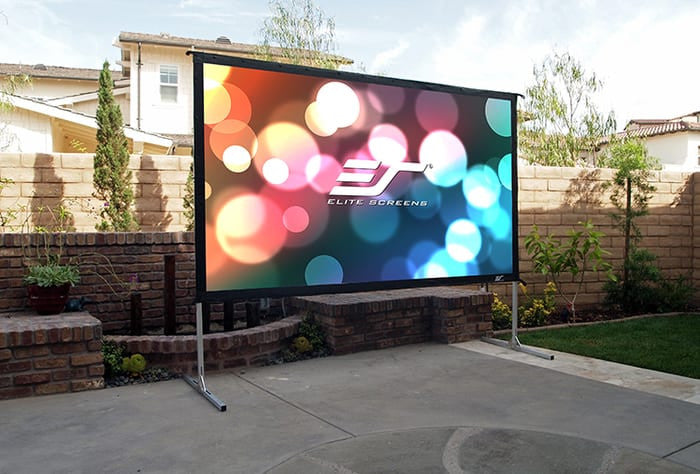
Deciding between an all-in-one rear-projection TV and a two-part front-projection system used to be easy. Historically, rear-projection systems were cheaper and easier to set up, however, front-projection systems have become easier to set up — and the price of high-definition projectors is dropping.
On the surface, the distinction seems simple - front projection screens reflect light and rear projection screens diffuse light through the material. However, how do you go about choosing the right type of screen for your project? This choice is even tougher when considering that rear projection screens come in numerous materials and that some of these light-diffusing screens are versatile and can even be used for front projection. So, how do you decide what’s best for you? Our blog-cum-guide outline the key differences between front and rear projection to help you take an informed decision.
Space usage
Front projection screens do not require space behind the screen, therefore, leaving more floor space. You must also take into consideration people or objects that could obstruct the projector at any time. Rear projection screens need space for equipment and projectors behind the screen. The larger the screen, the larger the space required.Gauging brightness requirement
Usually, front projection screens are brighter when used in darkened rooms. However, brightness is highly dependent on projector output and screen gain. As the screen transmits light in both directions, lumens are lost in rear projection. This loss of light could be offset in high ambient light situations where the front projection screens would not perform as well.Factoring ambient light
Front projection requires darker interiors as any light source hampers the efficiency of the projector. Contrast and colour saturation are better on rear projection screens in areas with high ambient light. So rear projection screens are perfect for outdoor applications.Viewing angle
Viewing angle largely depends on the gain. Typically, higher the gain, the narrower the optimal angle of view. However, significant improvements in the recent past have been made to widen the viewing cone with high gain coatings. Viewing angle on rear projection screens is dependent on the material’s ability to diffuse light across the viewing surface. Some materials, especially darker surfaces diffuse light more evenly across the screen.Contrast
Contrast levels on front projection screens are easily influenced by ambient light. Gain has no effect on contrast. Rear projection is less affected by other sources of light and contrast is. Ambient light usually comes from a different direction than the projector and since the light goes through the screen rather than being reflected off of it. In rear projection, the ambient light does not affect contrast as much as in front projection.In a nutshell, the right choice depends on largely depends on your viewing environment and projector. By looking at the features of each material you know for example that a highly lit room requires a rear projection surface, if your projector is powerful, you should opt for a black screen that provides deeper black levels and, as a result, a much higher contrast ratio.
Once you have settled on the front vs rear question, you can take a look at individual screen products from each category and see what properties suit your situation. Interestingly, some screens can be used for both front and rear projection, providing the versatility required for special projects.









